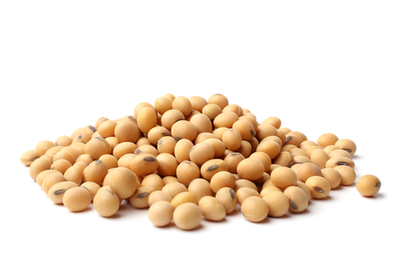The soybean futures closed the trading session on Wednesday (12) in mixed field in the Chicago Board of Trade. The highlight for Brazilian producers of soybeans, however, was the plunge of more than 1% of the dollar against the real, taking the U.S. currency to R$ 4.93. With premiums down sharply and the CBOT redefining its route, prices in the Brazilian market continue under intense pressure, which keeps new business still very scarce at this time.
Prices have been dropping both inland and in the ports of Brazil and reflect the large supply in the 2022/23 period in the country-estimated at 150 to 155 million tons by private consultants and public agencies-which clashes with a limited logistics infrastructure and is insufficient to drain all this soybeans surplus in the best possible time.
Thus, as market consultant Vlamir Brandalizze, of Brandalizze Consulting, reports, premiums for Brazilian oilseeds have ranged from negative 130 to 140 cents on the dollar, that is, more than US$ 1.00 per bushel below the Chicago Board of Trade rate-for the short term, at least until May. And the tendency is for them to remain under pressure until the beginning of the second half of the year. “The premiums tend to improve from August on, when they already show between 50 and 70 cents positive. In September they are already over 100/120 positive and the seller already wants to sell in September, with October 150 positive. So, the premiums in the future, when the ports are decongested, will automatically improve”, says Brandalizze.
The consultant explains that, in this scenario, there are countless realities of producers needing to redefine their commercial strategies. Some of them have financial commitments to be fulfilled from April to May, others can hold on a little longer to soybean and move forward with corn sales-but are also scared by the recent aggressive drops in the national market-and others still have room to avoid the market as it is now. Regardless of which it is, the strategy will be necessary. “We’ve been saying since November that the market would be pressured during the harvest and now is the period of the greatest pressure, of supply, and there is no room in the ports for larger volumes,” says the consultant. According to the Brandalizze Consulting survey, the greatest pressure on prices at this moment is in regions like Santa Catarina, Paranaguá and Sao Paulo, among others, where the indicatives are ranging from R$135.00 to R$145.00 per bag in the over-the-counter market, also locked due to lack of space in warehouses.
In ports, prices have also fallen, with Paranaguá already talking about R$147.00 per bag in April, far from the best prices already recorded in this first quarter of 2023. For the Parana terminal, the best position, still according to the consultant, would be R$158.00 in August. In Rio Grande, the references vary from R$151.00-in May-to R$156.00 in July.
“It’s been a week with little movement because the producer expected the USDA to give a breather to the quotations, which didn’t come, and to make matters worse, the dollar is falling sharply,” he says.
In this environment, with the 2022/23 South American crop about to be harvested, the Brazilian producer will now have to divide his attentions and efforts between his commercial plan and the beginning of the new US crop, as explained by the market analyst at Agrinvest Commodities, Eduardo Vanin.
“U.S. soybeans have to get expensive, (for now). That’s the only way. And for it to get expensive it has to be at a lower production level. It won’t be productivity. The American crop doesn’t break, it’s rare to have a break of more than 5% in productivity. What is really going to make it effective is a reduction in the area. And there is a real threat, which is the northern United States, with a lot of snow right now. That brings thaw and the water, in the form of snow, according to the NOAA, which ranges from 1500 to 2000 millimeters. It will become one big quagmire. And this can reduce the area of soybeans and corn, in the Dakotas and Minnesota. If this happens, the American soybean will become expensive and Brazil will swim with it, being our salvation for these premiums that don’t stop falling,” details the analyst.
Source: noticiasagricolas.com.br
